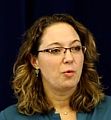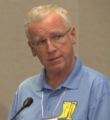Restore Watershed Hydrology and Re-Set the Ecological Baseline: “A goal of the IREI program is to embed state-of-the-art hydrology in engineering ‘standard practice’,” says Kim Stephens, Partnership for Water Sustainability

“Among land and drainage practitioners, how water gets to a stream and how long it takes is not well understood. Unintended consequences of this failure to ‘get it right’ include degraded urban streams, more flooding, more stream erosion, less streamflow when needed most, and an unfunded infrastructure liability,” states Kim Stephens. “In 2006, American engineer and textbook author Andy Reese coined the term voodoo hydrology to both describe drainage practice and draw attention to the need for changing the way drainage engineers practice their trade.”










